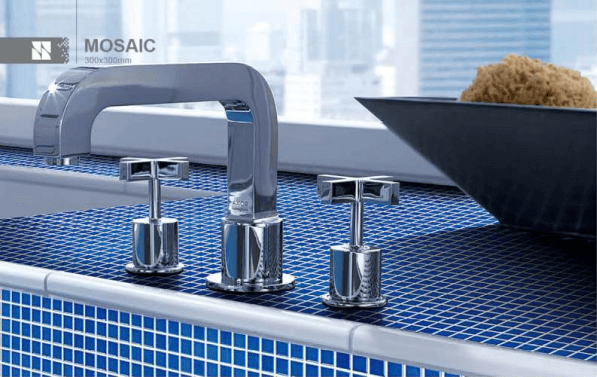
Mosaic tiles can provide rich colors and changeable shapes to the living room, shower room and other areas, so it is a very good decoration. And the application of mosaic tiles is very wide, such as science and technology museums, theaters, hotels, kindergartens, courtyard pavilions, clubs and other places are very suitable.
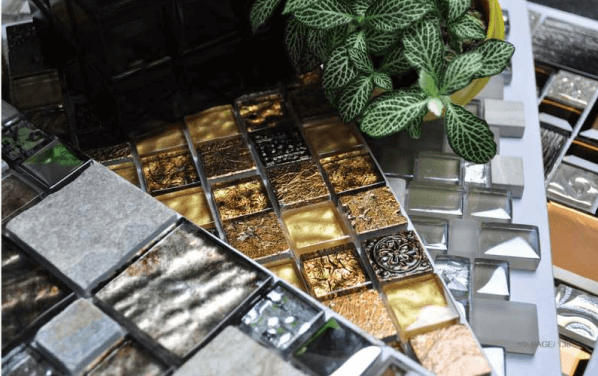
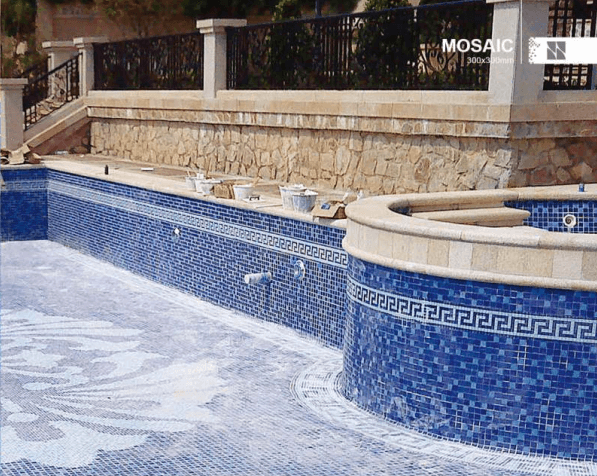
The personality and natural beauty reflected in mosaic art exudes an intoxicating fragrance.
Glass mosaic is made of natural minerals and glass, light weight, acid, alkali, chemical resistant, and environmentally friendly. It is more transparent, can reflect light, its color is very bright, and it is designed to be better in graphics. It can be used in bathrooms and swimming pools, but it is not wear-resistant and is rarely used on the ground.
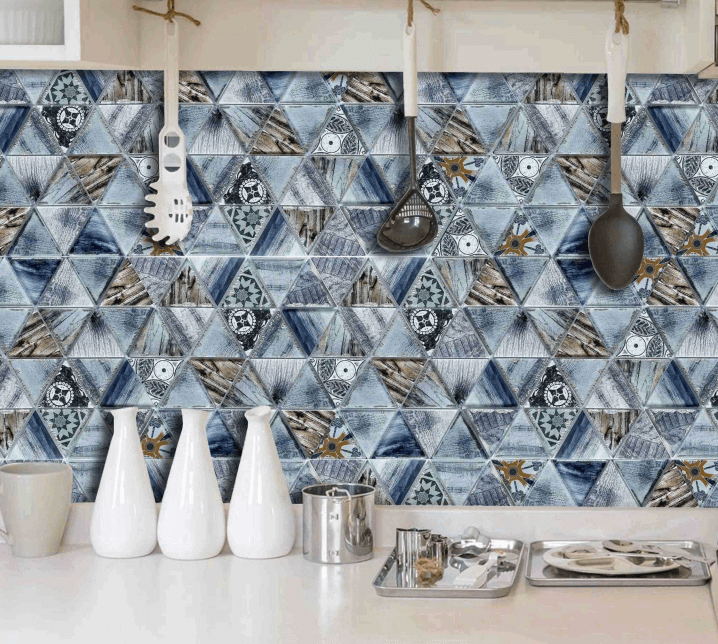
The variety of colors is extremely rich, and different colors can be organically combined into different styles of patterns. If they are properly matched, they can create a unique and beautiful decoration effect, but their acid and alkali resistance is poor, and the waterproof performance is not very good.
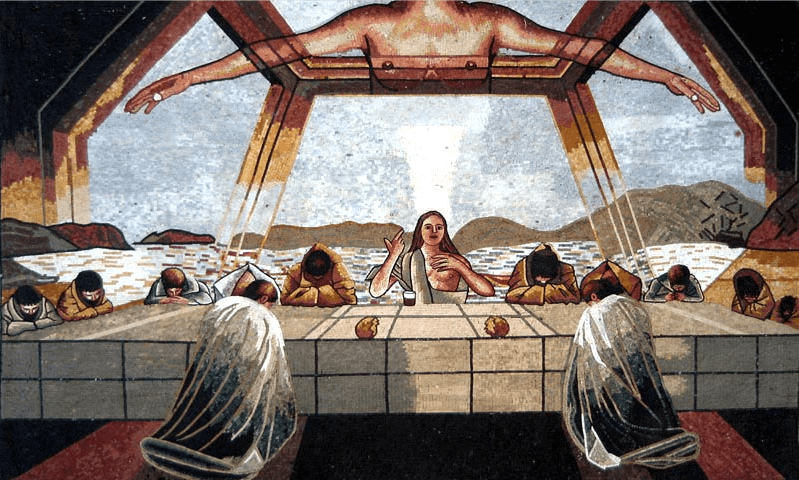
It is the most traditional type of mosaic. It is famous for its small size and is relatively monotonous. It can be unmodified and the surface can be rough or smooth. It has the characteristics of waterproof, moisture-proof, wear-resistant and easy to clean, but its plasticity is not strong, and it is mostly used for exterior walls and kitchen and bathroom.
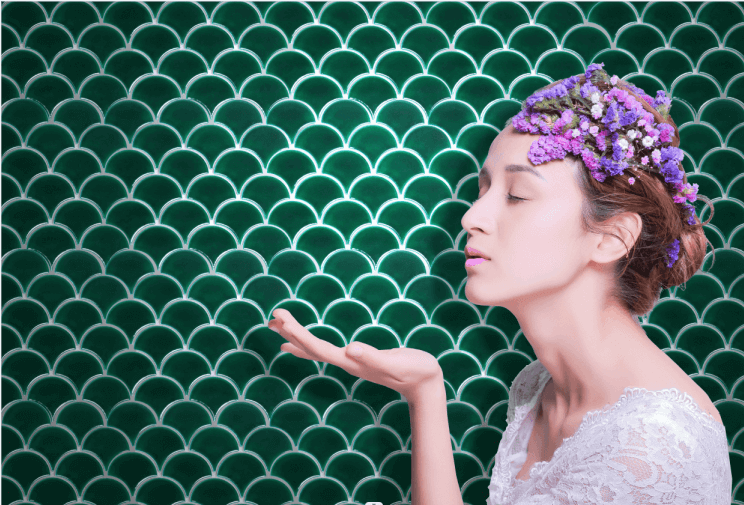
Its main advantage is that it is wear-resistant and can be decorated on the ground. The traditional stainless steel mosaic has a single color, mostly gold and silver, and the surface technology is only brushed and mirror; but the modern stainless steel mosaic can become rich in color after electroplating, such as: rose gold, electroplating black, titanium gold, electroplating blue and so on. However, the surface is easily oxidized and the color is dull, and the inferior ones will have rust spots.
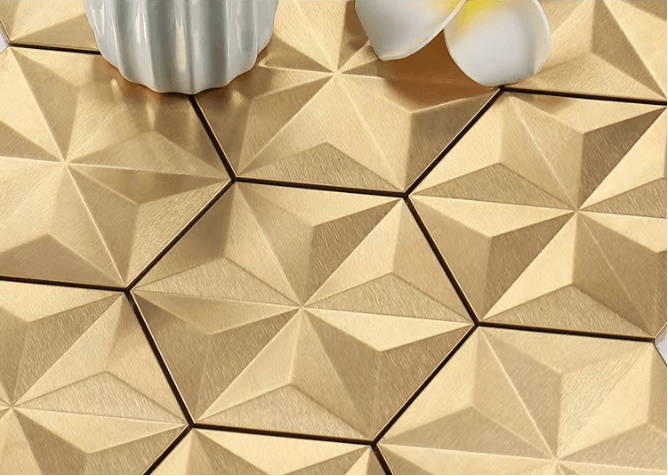
The particles are all aluminum, the strength is guaranteed, and the secondary processing can be used to make laser, phantom, circle and other effects, wear-resistant, and can be used for floor decoration. But its color is single. No surface technology limited to wire drawing or mirror surface; heavier, the installation needs to be brushed and filled with mud, and the price is higher.
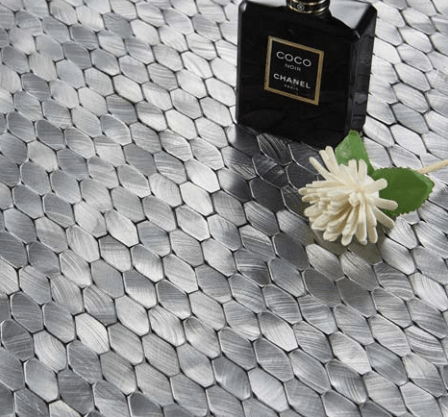
The colors are rich, and the surface processes include wire drawing, flashing, drawing, mirror, stone grain, wood grain, etc.; the surface of the particles is protected by a resin layer, and the color luster is always the same: the particles are directly pasted with the sponge adhesive, the engineering is simple and the lightest, no need Brush mud caulk.
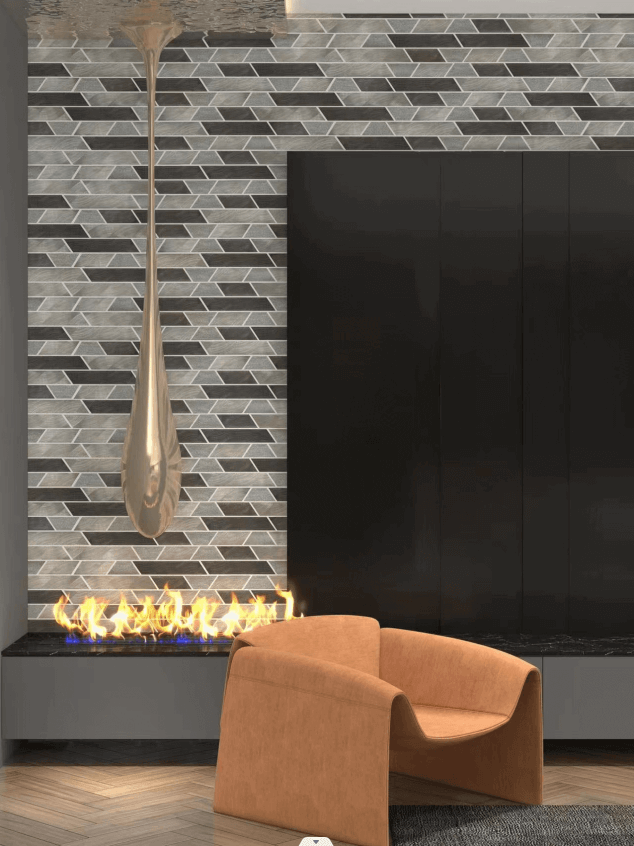
A small reminder, when purchasing a home decoration mosaic wall, we must consider the unity of the overall style of the home decoration, so that the space will look very comfortable and beautiful. Also note that the surface of the aluminum composite panel mosaic is a resin protective layer, so it cannot be decorated on the ground to avoid wear.
Mosaic tiles are currently the most used tiles in the home. Because chips of mosaic are relatively small, it will be relatively troublesome to lay them. At the same time, there are many skills and methods when laying them. Next, let me introduce them to you. Let's take a look at the laying method of mosaic tiles for your reference.
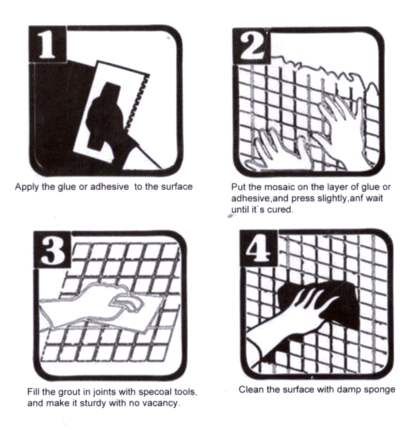
If it is a concrete wall, the loose concrete, mortar and other sundries on the wall should be removed first, and the raised parts should be chiseled flat. If it is a smooth wall surface, it must be roughened with a roughening machine first. The release agent attached to the wall can be cleaned with 10% alkali solution. After the wall is wetted with water, scrape 2-3 mm thick putty ash with cement mortar, or shake fine cement mortar to increase its cohesive force. If it is a brick wall, clean the wall first when plastering the primer, check and deal with easily damaged and loose parts such as window sills, window covers, waistlines, etc., and finally wet the wall with water.
If it is a concrete wall, the wall surface should be sprinkled with water and brushed with an interface treatment agent, and the cement mortar leveling layer should be applied layer by layer. The thickness is 10-12 mm. Strengthen measures to wipe and press in layers, and the surface should be brushed and sprinkled with water for maintenance. If it is a brick wall, after the wall surface is wet, use cement mortar layered as a base layer to make a leveling layer. The thickness of the mortar is generally 12-15 mm, and it is smoothed according to the punching bars. If it is an aerated concrete wall, before plastering the mortar of the bottom layer, the wall surface should be sprinkled with water and brushed with an interface treatment agent, and it should be applied as it is brushed.
Brick selection and brick arrangement should be carried out before the thread is played. The grid must be comprehensively arranged in door and window holes, window sills, cornices, waistlines and other parts according to the construction drawings, horizontal and vertical decorative lines. When arranging mosaics, pay special attention to the structural dimensions of the corners, wall stacks, awning surfaces, window sills and other details, and arrange the dividing lines according to the entire mosaic. Only the horizontal seams of the grid should be flush with the window sills, door and window faces, and the vertical grid lines are required to be arranged in an integrated manner on the balcony and window sides. The spring line should be carried out after the leveling layer is completed and the inspection is qualified. First, the vertical line of the external corner of the wall and the horizontal line (two baselines) of the upper edge of the mosaic are popped up according to the large mosaic; then the horizontal grid line is popped up according to each mosaic; Finally, pop up the vertical grid line for each mosaic or 2-3 mosaics.
When pasting mosaics, it is generally carried out from top to bottom. Before applying the adhesive layer, brush the plain cement slurry on the wet leveling layer, and apply a 3 mm thick paper-reinforced lime plaster cement mixed slurry adhesive layer. When the adhesive layer is pressed by hand without pits, apply it The bullet line is divided into grids, and the mortar is still soft at this time. At the same time, spread each mosaic on the wooden board (bottom side up), wipe the bonding surface of the mosaic with wet cotton yarn, and then brush it with a small brush dipped in water. Then, scrape a layer of 2 mm thick cement slurry on the mosaic paste surface, squeeze it down with an iron trowel while scraping, and tap the wooden board to vibrate, so that the cement slurry fills the joints and discharges air bubbles. Finally, brush water and moisten the adhesive layer, paste the mosaic on the wall according to the line and ruler, and tap and press lightly with a wooden hammer to make the paste more firm.
The hard pasting method is to sprinkle water on the leveling layer that has been stretched, scrape a layer of plain cement slurry with a thickness of 1-2 mm, and then operate according to the soft pasting method. The disadvantage of this method is that the grid lines on the leveling layer will be covered by plain cement slurry, so there is no way to rely on when laying mosaics.
Sprinkle fine sand cement dry ash on the back of the mosaic to fill the joints, then scrape the ash flat with a mortar knife, and sprinkle water to wet the dry ash in the joints to form cement mortar, and then paste the mosaic on the wall according to the soft paste method . It should be noted that the dry mortar in the seam should be fully filled, and the water should also be wet. If it is too dry, some dry ash in the seam will leak out when the paper is peeled off, resulting in no ash in the seam. If it is too wet, the mosaic cannot be lifted and cannot be finished. Since the seam is well filled by this way, the link of wiping the seam can be omitted, and it only needs to be wiped a little after peeling off the paper or protect plastic film.
The mosaic should be aligned according to the seam, and the distance between the joints should be the same as that of each row of seams. Put the hardwood board on the mosaic paper that has been pasted, and tap the hardwood board with a small wooden hammer, one by one, to ensure that the veneer is smooth. Paste the mosaic on the drywall in order, pay attention to the distance between each piece, and keep the distance between the particles consistent. Every time about one square meter of auxiliary material base is applied and the texture is scraped, the paving can start. When the adhesive layer starts to solidify, you can use a soft-bristled brush to wet the mosaic face paper, and the paper can be peeled off after the face paper absorbs water and soaks away. Before peeling off the paper, a trial peeling should be carried out first. Sprinkle cement ash into the wet paper water and stir well, which can speed up the water absorption speed of the paper surface and advance the time of peeling off the paper. When peeling off the paper, it should be peeled down in order, and should not be peeled out violently.
After peeling off the paper, if individual small particles are found to fall off, they should be filled immediately. If "jumping" or "blind seam" is found, it should be pulled out and reset with a steel knife in time to make the gap horizontal and vertical. Also, if necessary, adjust the position of the mosaic in time before the mud dries. After the joints are filled, the brick surface should be tapped firmly with a wooden clap board to enhance its cohesive force. This work must be done before the initial setting of the cement. NOTE: Allow the grout to set for 24 hours before caulking.
After paving and pasting, pat with a sponge knife to remove the cement accessories around the mosaic surface, it is convenient for caulking. After about 24 hours, after the mosaic cement is dry, mix the caulking agent according to the proportion, take an appropriate amount of caulking agent with a sponge scraper, and press it hard against the direction of the line at 45 degrees to fill the gap evenly with the caulking agent To saturation: (Because the mosaic pointing area is large, it is not suitable to use beautifying agent for beautifying one by one). The caulking is about 1 square meter. After 10-15 minutes, you can use a wet towel or sponge to wipe off the residual caulking agent on the surface. Be careful not to wipe off the caulking agent in the gap.
To wipe the seam, use a squeegee first, and use plain cement slurry of the same type, color, and consistency as the one used for inlaying to scrape it all over the mosaic. Some parts can be filled with cotton yarn dipped in slurry. After the seam is wiped, the plain slurry will seriously pollute the surface of the mosaic and must be cleaned in time. The cleaning of the wall surface should be carried out after the mosaic bonding layer and jointing mortar have set.
The mosaic tiles sold on the market are more diverse now, which makes people have more room to play when decorating with mosaics. It can be combined into various abstract or specific modeling patterns with different mosaic methods.
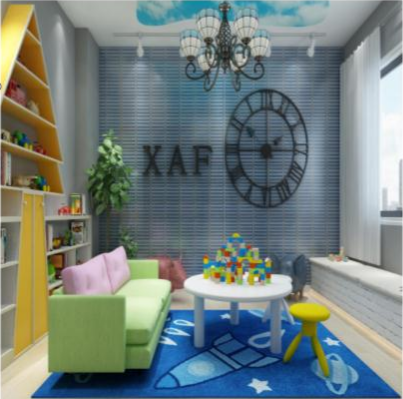
It is inconvenient to decorate large tiles at the corners of the indoor space or in places with curved surfaces, and the advantage of using mosaic for its small size is revealed. It can wrap the curved surface smoothly. Small mosaic tiles enclose a curved space, and the use of pink mosaic tiles makes the wall look refreshing and clean. White mosaics are used as embellishments between pink tiles, which can present a warm and watery feeling, especially suitable for use in bathrooms.
A single mosaic is small in size and its color is not exaggerated, but the combination of multiple small mosaics is like putting on a shining costume on the floor of the room. Using this method of tiling can make small objects show a big picture.
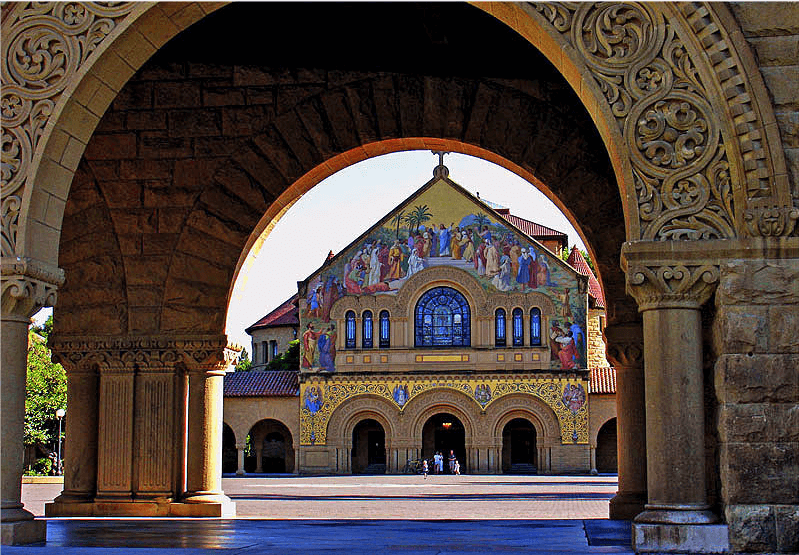
Mosaics can be freely applied to indoor walls, floors, stoves and waistlines. The application of mosaic can play a very good embellishment effect on the decoration of other materials. When other materials are used for decoration in a large area, mosaics can be used to make corrugated embellishments during the period, which can play a very good finishing touch. Now the colors of mosaics are rich and varied, no longer limited to traditional black, white and some light colors. And there are many new bold attempts, such as dark red, sapphire blue, turmeric and light green, these mosaic tiles are not uncommon. The clever interspersed application of these bright colors can create a different feeling and make people feel different when they are in it. In the whole decoration design, not only the method of interlacing colors can be used, but also the way of vertical paving can be used. The way of vertical paving can also present a bright feeling. In the gaps of white wall tiles, mosaics are used for treatment, and the mosaics spliced vertically can create a different feeling.
Using mosaics of suitable colors in the interior can also create a retro feeling. During the decoration process, gorgeous yellow imitation gold mosaics are used, the dazzling color looks very warm. It presents a mottled picture of light and shadow when you turn on the indoor lights and coupled with the background of the bright surface of the tiles. The wall uses retro pattern tiles to extend this feeling to the wall, and the overall feeling is very good.
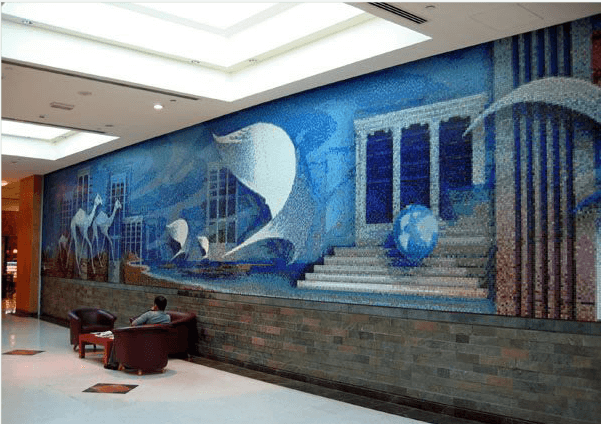
This is a bold approach to decorating. From the ceiling to the wall and then to the ground, the mosaics of the same continuous and gradual color are used to create a pure mosaic world, and the color presents a gradual scene from top to bottom from deep to light. This method can make the interior space appear taller and wider.
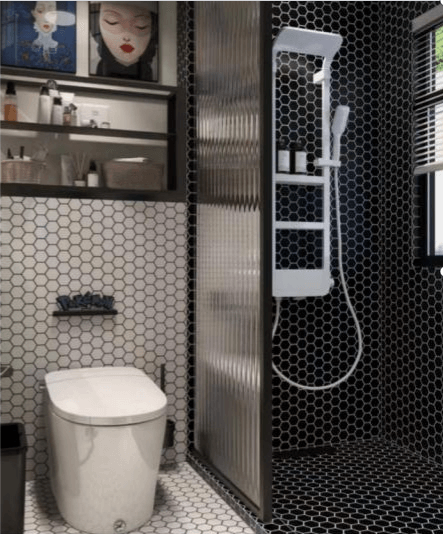
The reasonable application of mosaic can create different decoration effects. The above are several common methods of mosaic paving. If you want to know more, you can visit our website: www.sunvin.com.cn